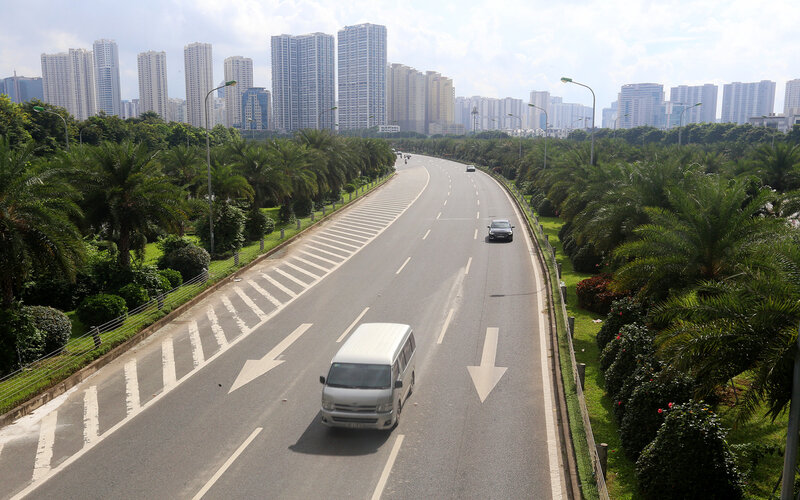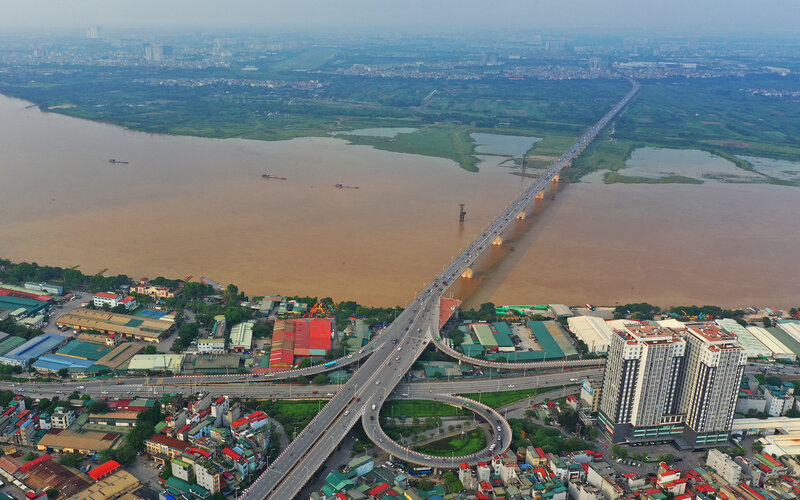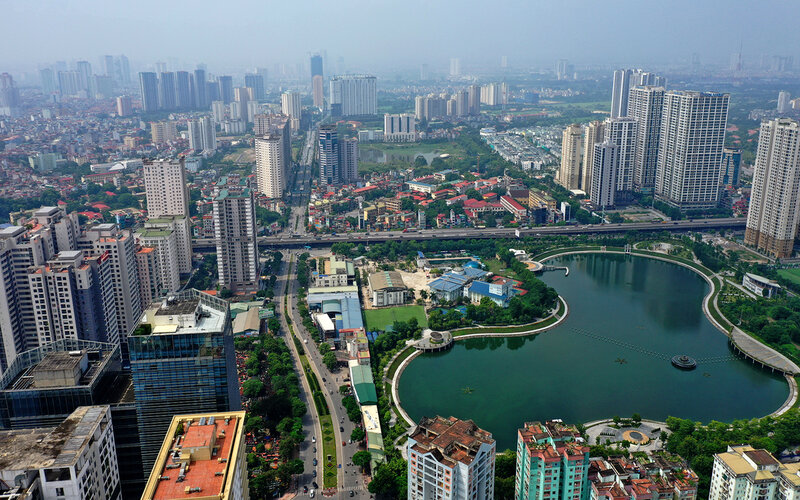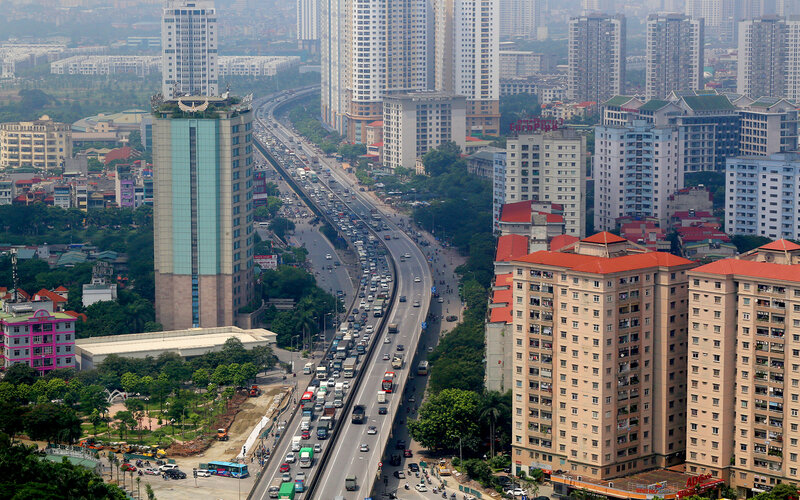Five major traffic works drive Hanoi’s future
These major projects have become the capital city's main thoroughfares.
Five major traffic works completed over the last ten years have enhanced the future development outlook of Hanoi and renewed the image of the capital city, VnExpress reported.
In 2010, the Hanoi People's Committee inaugurated dozens of infrastructure projects to celebrate the 1,000th anniversary of Thang Long - Hanoi. These projects have become the capital city's main thoroughfares.
Thang Long Avenue is the largest project, 30 kilometers long, connecting Cau Giay district with the suburban districts of Hanoi.
Thang Long Avenue. Photo: VnExpress |
The project has a total investment of VND7.5 trillion (US$323.58 million). Ten years ago, it was considered the largest and most modern expressway in the country with a width of up to 140 meters.
In 10 years of operation, the first boulevard in Hanoi has connected the city center with the western suburbs and the satellite city of Lang - Hoa Lac, helping boost the development of a number of urban areas on both sides of the road and relieve the demographic pressure for the city center.
Another highlight on the occasion of the 1,000th anniversary of Thang Long - Hanoi in 2010 was Vinh Tuy bridge, which measures 5.8km long with a total investment of VND3.6 trillion (US$155.32 million) and connects Long Bien and Hai Ba Trung districts.
Vinh Tuy bridge. Photo: VnExpress |
The bridge shortens the route from the city center to Highway 5 (to Haiphong city and Quang Ninh province) by about 3km, relieves the traffic burden of Chuong Duong and Long Bien bridges, and contribute to uniting the capital city and the northern provinces in economic development.
After 10 years of the bridge's inauguration, new urban developments have been made at its two ends in Hai Ba Trung and Long Bien districts.
To reduce the load for Vinh Tuy bridge, the Vietnamese government approved the second-phase construction of the bridge in May 2020, with a total investment VND2.54 trillion (US$109.6 million) and four lanes. It is expected to commence by late 2020.
To Huu road, which runs parallel to Thang Long Avenue and connects Ring Road 3 with Bac Tu Liem district, was also opened in 2010. It is expected to alleviate population density in the city center.
To Huu street. Photo: VnExpress |
The road, built with an investment of VND700 billion (US$30.2 million), is 40m wide and has six lanes. After 10 years, To Huu road is known as the skyscraper road due to more than 50 buildings of 25 to 35 floors along its sides, along with a series of urban areas and villas.
Opened to traffic in October 2010, the 6.2km viaduct connecting Thanh Tri bridge and Phap Van highway to Ring Road No.3 has a total investment of VND1.12 trillion (US$48.3 million).
Viaduct connecting Thanh Tri bridge and Phap Van highway. Photo: VnExpress |
The viaduct was designed in accordance with expressway standards, so that cars can run at maximum speed of 90km/h. This is the artery connecting the city’s downtown with suburban districts, including Hoang Mai, Thanh Tri.
In 2012, the viaduct from Linh Dam to Mai Dich was opened to traffic with a total investment of more than VND5.5 trillion (US$237.3 million) and considered the most modern one in Vietnam at that time.















